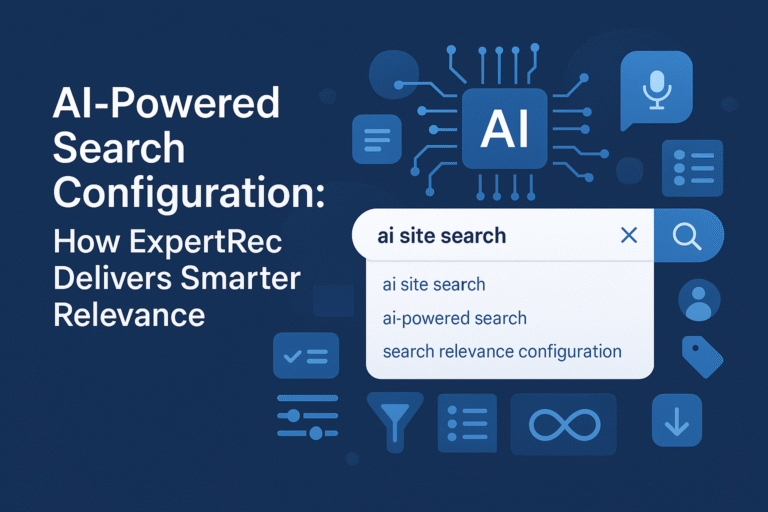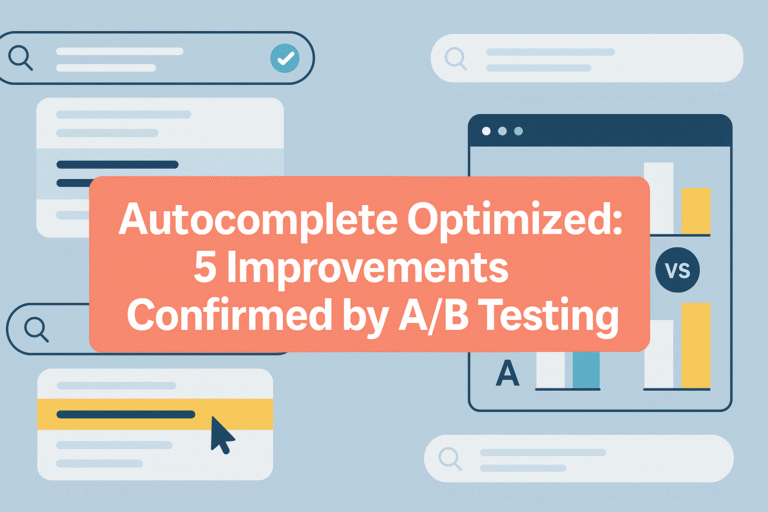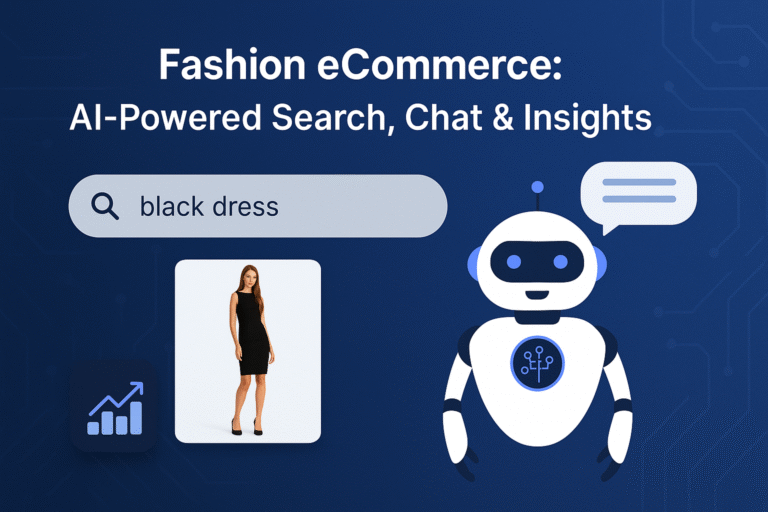In the realm of digital commerce, providing users with relevant results has become non-negotiable. Traditional keyword-based search engines often fail to meet expectations because they overlook the core driver behind every query: user search intent.
Understanding search intent means knowing why a user is searching, not just what they’re typing. By aligning your ecommerce search system with user intent, you can dramatically enhance user satisfaction, boost conversion rates, and minimize bounce rates.
This blog explores the concept of search intent in depth, evaluates the limitations of conventional approaches.
What Is User Search Intent?
User search intent, or query intent, refers to the underlying goal a user has when performing a search. It moves beyond keywords to ask: What is the user really trying to achieve with this query?
There are typically three primary types of search intent:
-
Informational Intent
-
User is seeking knowledge or answers.
-
Example: “What is sustainable fashion?”
-
Goal: Content consumption.
-
-
Navigational Intent
-
User wants to reach a specific website or product.
-
Example: “Nike Air Max men’s size 10”
-
Goal: Go directly to a destination.
-
-
Transactional Intent
-
User is ready to take action, such as buying or signing up.
-
Example: “Buy Bluetooth headphones under ₹2000”
-
Goal: Complete a transaction.
-
A well-optimized ecommerce search engine should be able to detect the intent type behind a query and respond accordingly.
Why Understanding Search Intent Matters in Ecommerce
Modern shoppers interact with ecommerce sites differently than before. They use full phrases, ask questions, and expect instant, personalized results. Search engines that fail to interpret intent correctly risk losing users to frustration.
Consequences of Ignoring Intent:
-
Poor Relevance: Serving generic or unrelated results
-
Lower Conversion: Users can’t find what they’re ready to buy
-
Increased Bounce Rate: Users exit the site without engaging
-
Missed Upsell Opportunities: No understanding of buying context
For instance, a search query like “best laptops for graphic design” contains transactional and informational elements. A traditional search engine might match only the keyword “laptop”, but an intent-aware engine will promote high-performance laptops tailored for design, reviews, and comparisons.
How Search Engines Identify User Intent
Understanding search intent requires a combination of NLP, machine learning, and semantic analysis. Here’s how modern systems achieve it:
1. Natural Language Processing (NLP)
NLP breaks down complex queries to extract context, entities, and sentiment.
-
Recognizes phrases like “best for”, “cheap”, “under ₹1000”
-
Understands grammatical structures and intent-bearing verbs (e.g., “buy”, “compare”, “learn”)
2. Query Classification
Using supervised learning or rule-based algorithms, queries are mapped to specific intent categories.
-
“How to fix a washing machine?” → Informational
-
“iPhone 14 price” → Navigational/Transactional
-
“Buy waterproof running shoes” → Transactional
3. Semantic Matching
Intent detection goes beyond literal keyword matches using semantic embeddings. These vectorize both the query and content to find meaning-based matches, even when exact terms differ.
4. User Behavior Signals
Search engines monitor:
-
Click-through rates
-
Time spent on results
-
Add-to-cart or purchase activity
These signals help fine-tune relevance based on real-world behavior, not just text analysis.
Is It Worth Investing in Intent-Based Search Systems?
Absolutely. Understanding and leveraging search intent leads to measurable improvements in business performance.
Key Benefits:
-
Higher Conversions: Users find what they actually want faster.
-
Better Personalization: Serving context-aware results improves user experience.
-
Improved SEO: Intent-matching search supports long-tail and natural queries.
-
Reduced Friction: Smooth navigation minimizes drop-offs and frustration.
However, achieving accurate intent detection is technically complex and resource-heavy if built in-house.
Challenges of Building Intent-Aware Search Engines
Building a system that deeply understands user queries requires:
-
Access to large language models (e.g., BERT, GPT)
-
A semantic vector search backend (e.g., FAISS, Weaviate)
-
Custom training data and annotations
-
Search behavior analytics pipelines
-
Infrastructure to ensure low latency
Maintaining such a system in production—while ensuring speed, relevance, and stability—is both time-consuming and expensive.
This is where Expertrec provides a plug-and-play solution for businesses that want powerful intent-based search without the technical complexity.
How Expertrec Understands and Leverages Search Intent
Expertrec is an AI-powered site search platform built for ecommerce and content-rich sites. It offers robust search intent detection, semantic matching, and behavioral ranking—all out-of-the-box.
Key Features:
1. Semantic Understanding
Expertrec uses NLP and embeddings to analyze queries in real time, delivering contextually relevant results.
-
“Top-rated wireless headphones for gym” matches reviews + relevant products
-
Handles synonyms, variants, and typos seamlessly
2. Real-Time Behavior Analysis
The engine dynamically adjusts rankings based on clicks, bounce rates, and conversions—continuously improving relevance.
3. Transactional Focus
When a query signals buying intent, Expertrec prioritizes high-converting listings, inventory availability, and pricing metadata.
4. Visual & Structured UI
Built-in support for minimal yet informative UIs ensures that results are not only accurate but easy to engage with.
5. Fast, Scalable Indexing
Expertrec keeps your catalog up-to-date instantly—ensuring no product is left behind in the results.
6. No-Code Integration
Whether you’re on Shopify, Magento, BigCommerce, or a custom stack, integration is fast and requires minimal technical expertise.
Why Choose Expertrec for Intent-Based Search?
Unlike traditional engines that rely solely on keyword relevance, Expertrec takes a user-centric approach. Its intent-aware technology ensures that:
-
Informational queries return guides, blog posts, or FAQs
-
Navigational queries highlight specific products or collections
-
Transactional queries surface high-converting listings with CTAs
All this is delivered without the burden of developing and maintaining complex machine learning pipelines.
Conclusion
Understanding user search intent is no longer a luxury it’s a strategic necessity for ecommerce businesses seeking to optimize discovery, boost conversions, and deliver personalized experiences.
Expertrec empowers brands to modernize their search with semantic intelligence, real-time behavior analysis, and intent detection—all within an easy-to-implement package.
If you want to transform your site’s search from a basic utility into a high-converting business asset, it’s time to move beyond keyword search—and start understanding your users’ intent.
FAQs
User search intent refers to the reason behind a user’s search query—whether they want to learn, navigate to a page, or make a purchase.
2. How can search engines identify search intent?
Modern search engines use natural language processing, semantic embeddings, and behavioral analytics to interpret and respond to intent.
3. Why does search intent matter in ecommerce?
Matching search results with user intent ensures users find what they need quickly, which increases satisfaction and conversions.
4. Can traditional keyword-based search engines understand intent?
Not effectively. They often miss context, synonyms, or phrasing variations—leading to irrelevant or frustrating results.
5. How does Expertrec help with search intent optimization?
Expertrec’s AI search engine detects intent in real-time using NLP and behavior signals, ensuring accurate and personalized results.
6. Is Expertrec suitable for non-technical teams?
Yes. Expertrec offers no-code integration, making it accessible for ecommerce teams without dedicated search engineering resources.




